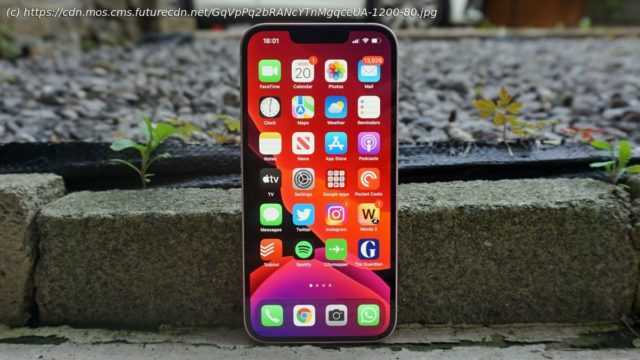The iPhone 13 is an iterative update, but it may be the most important one yet.
Editor’s Note: We need a moment longer with our iPhone 13 to make a final verdict on the star rating. Be sure to head back in the coming days to see our final score for the iPhone 13. The iPhone 13 doesn’t bring with it a huge number of new features, but it does improve on the iPhone 12 in several areas – chiefly battery life, power, display and cameras – to make this one of the most impressive all-round handsets we’ve seen from Apple. On paper, you’d be hard pressed to find a reason why Apple didn’t call this phone the iPhone 12S. The design is largely the same, the specs don’t look hugely different, and there aren’t many headline-grabbing new features. However, everything on the iPhone 13 is a touch better than before – and some elements are significantly better. The highlight of the iPhone 13 is its battery life. Previously, iPhones haven’t been synonymous with strong battery life, but during every day or our testing so far we’ve been hard-pressed to run the iPhone 13 out of juice. Apple may have finally cracked it when it comes to battery life, but be sure to head back soon for our final verdict to see if we still feel the same way at the end of our testing period. The iPhone 13’s new A15 Bionic chipset, meanwhile, is incredibly powerful, and paired with 4GB of RAM it’s capable of running multiple apps and tasks quickly and efficiently. A new duo camera for the iPhone 13 improves clarity in images, while the introduction of the company’s Sensor Shift optical image stabilization (OIS) technology, previously only available on Apple’s Pro Max handsets, is a big deal for those who want to shoot quickly without losing their subject in a blur. Even the screen on the iPhone 13 is a touch better than what we’ve seen on previous ‘standard’ iPhones, and that’s a big deal if you’re upgrading from an iPhone XS or older. The OLED technology here enables a brighter picture than ever, and the picture quality is simply fantastic. One disappointment, however, is that Apple hasn’t included a 120Hz refresh rate on the iPhone 13, so you’re not getting as smooth an experience as on the iPhone 13 Pro or iPhone 13 Pro Max. As ever, Apple’s new iPhone will cost you, with the iPhone 13 price starting at $799 / £779 / AU$1,349 – although this year that gets you 128GB of storage, rather than the 64GB of the base-model iPhone 12. While at first glance the iPhone 13 may not seem like a great leap forward for Apple, the improved battery life, performance, screen and camera all add up to be a worthwhile upgrade for anyone who’s coming from an older iPhone, or looking to make the switch from Android. The iPhone 13 series was announced on September 14 at the company’s launch event, with pre-orders opening on September 17. The iPhone 13 release date is September 24, and unlike with 2020’s iPhone 12 series you’ll be able to buy the new handsets on the same day. The iPhone 13 starts at $799 / £779 / AU$1,349, which is the same price as the iPhone 12 in the US and Australia, and a touch cheaper in the UK. The iPhone 12 cost $799 / £799 / AU$1,349 at launch. You’ll get 128GB of storage for that price – Apple has dropped its 64GB models this year, and not before time. If you need more storage, the 256GB iPhone 13 costs $899 / £879 / AU$1,519, while the 512GB model costs $1,099 / £1,079 / AU$1,869. If those prices are a bit of a stretch, the iPhone 13 mini has similar specs but is a not-insignificant amount cheaper, starting at $699 / £679 / AU$1,199, while going in the other direction you’ve got the iPhone 13 Pro and iPhone 13 Pro Max if you’re looking for higher specs and, in the case of the latter phone, a larger screen. If you own an iPhone 12, you’re unlikely to see a big difference between that handset and the iPhone 13. If, however, you own an older iPhone, or an Android device, you’re certainly going to see some differences. The new iPhone features a flat-edge design, which debuted with the iPhone 12 range. That means the design is a touch more angular than the rounded finish of previous iterations, but the phone is still comfortable to use one-handed. The front and rear of the handset are glass, but only the front panel has Apple’s patented Ceramic Shield technology, introduced on last year’s iPhone 12. Apple says this offers four times the drop resistance of the glass on older iPhones, but we still wouldn’t recommend putting this claim to the test. We’ve yet to drop this handset, but it’s comforting to know that the Ceramic Shield tech is there as a safety net – although we’d be more comforted if it was on the rear of the phone too. On the subject of durability, the iPhone 13 series is IP68 dust and water resistant, which means it can survive in up to six meters of water for a period of 30 minutes. Don’t expect this handset to be fully waterproof, but it’ll survive the odd dunk. On the left edge of the phone are the silence switch, the volume buttons and the SIM tray. The right edge hosts just the power button, so it’s easy to find with your thumb or finger when you’re trying to wake the handset. On the bottom edge are the speakers, and the Lightning port connector for charging and data transfer. We found the iPhone 13 was easy to use one-handed – it measures 146.7 x 71.5 x 7.7mm – although if you want a truly one-handed device, or you have smaller hands, the iPhone 13 mini may be a better choice.






